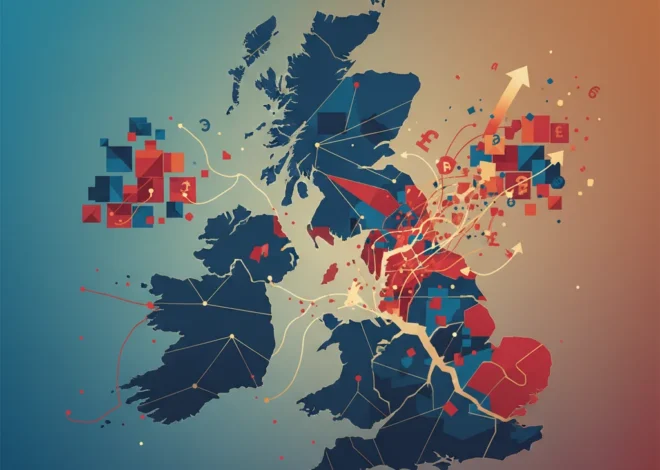
From a Reader’s Plea to a Financial Mandate: The Economics of Climate Inaction
In the fast-paced world of finance, where every second is measured in basis points and market movements, it’s easy to overlook the quiet signals. Recently, the Financial Times published a letter to the editor. It was not a complex analysis of monetary policy or a rebuttal of a recent M&A deal. It was just a name and a location: “From Helen O’Dowd, Nohoval, County Cork, Ireland,” under the title, “A reader’s plaintive climate change plea.”
This brief, hauntingly simple entry speaks volumes. It represents a growing, global cry for help, directed not at politicians or activists, but at the very heart of the global economy: the investors, bankers, and business leaders who read the FT. It’s a plea that the financial world must now translate from the language of emotion into its native tongue—the language of risk, return, and systemic stability. This is no longer a fringe issue; it is the most significant, underpriced risk facing the modern stock market and the global economy.
Translating Emotion into Economics: Climate as a Systemic Financial Risk
For decades, the financial industry has categorized climate change as a “non-financial” or “ethical” concern. This is a dangerously outdated view. Central banks and regulators are now unequivocal: climate change poses a first-order threat to financial stability. The risk is twofold, creating a pincer movement on the global economy.
- Physical Risks: These are the most tangible threats. They include the direct economic costs of more frequent and severe weather events—hurricanes devastating supply chains, droughts crippling agricultural output, and rising sea levels threatening trillions of dollars in coastal real estate and infrastructure. A 2021 report from the Swiss Re Institute estimated that the global economy could lose up to 18% of its GDP by 2050 if no mitigating actions are taken, with Asia being particularly vulnerable to a 22% GDP loss.
- Transition Risks: These risks arise from the shift towards a low-carbon economy. They are less about weather and more about policy, technology, and market sentiment. Sudden and disruptive policy changes, such as a globally enforced carbon tax, could render entire business models obsolete overnight. Companies heavily invested in fossil fuels face the very real prospect of “stranded assets”—reserves of oil, gas, and coal that become economically unviable to extract and are effectively worthless on the balance sheet. The banking sector’s exposure to these assets represents a significant, often unacknowledged, liability.
When combined, these forces threaten not just individual companies but the entire financial architecture. The interconnectedness of our modern economy means that a climate-driven shock in one sector—like agriculture or insurance—could cascade through the banking system, triggering a credit crisis and threatening the stability of the entire market. This is the definition of systemic risk.
The Great Economic Card Trick: Are You Watching the Wrong Hand?
The Investor’s New Mandate: Re-evaluating Fiduciary Duty in the 21st Century
The traditional interpretation of fiduciary duty has been to maximize short-term returns for shareholders, often at any cost. However, a growing consensus among legal and financial experts argues that ignoring long-term, foreseeable risks like climate change is, in fact, a *breach* of that duty. An investment strategy that is profitable for the next two quarters but bankrupts the portfolio in a decade is not a successful strategy; it’s a failure of foresight.
This has fueled the explosive growth of ESG (Environmental, Social, and Governance) investing, which seeks to integrate these non-traditional factors into financial analysis. Once a niche corner of the market, ESG-focused assets are projected to exceed $53 trillion by 2025, representing more than a third of total global assets under management. This is no longer just about “feeling good”; it’s about a fundamental reassessment of what drives value and mitigates risk in the long run.
However, the world of ESG is not without its challenges. The lack of standardized reporting, inconsistent rating methodologies, and the persistent threat of “greenwashing”—where companies exaggerate their environmental credentials for marketing purposes—are significant hurdles. For the serious investor, navigating this landscape requires a new level of due diligence, moving beyond simple ESG scores and into a deep analysis of a company’s genuine commitment to a sustainable transition.
The Power of Innovation: How Financial Technology is Shaping the Green Transition
While the challenge is immense, so is the opportunity for innovation. The intersection of finance and technology—Fintech—is creating powerful new tools to address the climate crisis. This is where the abstract plea for action meets the concrete world of data, trading, and technological solutions.
Below is a look at the growth of the sustainable debt market, a key financial instrument funding the transition.
| Year | Green Bonds | Social Bonds | Sustainability Bonds | Total Annual Issuance |
|---|---|---|---|---|
| 2019 | $271 | $20 | $49 | $340 |
| 2020 | $305 | $147 | $88 | $540 |
| 2021 | $523 | $224 | $201 | $948 |
| 2022 | $487 | $130 | $158 | $775 |
Source: Data adapted from Climate Bonds Initiative reports. Note: Figures are illustrative and rounded for clarity.
This surge in green finance is being enabled by financial technology in several key ways:
- Data & Analytics: Fintech platforms are emerging that use AI and satellite imagery to provide granular, real-time data on everything from a company’s carbon emissions to deforestation in its supply chain. This allows investors to move beyond corporate self-reporting and make decisions based on verifiable data.
- Blockchain & Transparency: While some early blockchain technologies have faced criticism for their energy consumption, newer protocols offer incredible potential for climate solutions. Blockchain can be used to create immutable, transparent registries for carbon credits, eliminating fraud and double-counting in the voluntary carbon market. It can also verify the provenance of “green” materials throughout a supply chain, assuring investors that the products they are financing are genuinely sustainable.
- Democratized Access: Financial technology is also empowering retail investors. Trading apps and robo-advisors are increasingly offering ESG-screened portfolios and green investment options, allowing individuals to align their savings with their values and participate directly in the financing of the green transition.
Beyond the Ballot Box: Why a Welsh By-Election Is a Red Flag for UK Investors
The Way Forward: A Roadmap for Capitalists in a Warming World
Responding to the climate plea is not an act of charity; it is a strategic imperative for long-term value creation. The transition to a net-zero economy represents the single greatest investment opportunity in a generation. The International Energy Agency estimates that annual clean energy investment worldwide will need to more than triple by 2030 to around $4 trillion to reach net zero by 2050. This is a massive reallocation of capital that will create new industries and crown new market leaders.
For business leaders and finance professionals, the path forward involves a multi-pronged approach:
- Integrate Climate Risk: Climate risk must be embedded in every aspect of financial analysis, from stock valuation and credit ratings to corporate strategy and M&A.
- Demand Transparency: Investors must use their leverage to demand standardized, audited, and comprehensive climate-related financial disclosures from the companies they invest in.
- Invest in Solutions: Actively seek out and allocate capital to the companies and technologies that are building the infrastructure for a sustainable economy—from renewable energy and grid modernization to carbon capture and sustainable agriculture.
- Engage with Policy: The financial sector must advocate for clear, consistent, and predictable climate policies, such as a meaningful price on carbon, which can help level the playing field and accelerate private sector investment.
India's Banking Sector Lands Record Foreign Investment: A New Era for the Global Economy?
The simple letter from County Cork was a plea. It was a human voice cutting through the noise of the trading floor. But it was also an unheeded warning bell for the global economy. To ignore it is not just a moral failure, but a catastrophic financial one. The stewards of capital have a choice: they can be the architects of a resilient, prosperous, and sustainable future, or they can be the financiers of its decline. The economics of climate change are no longer in question; the only remaining question is whether we will act on them in time.


